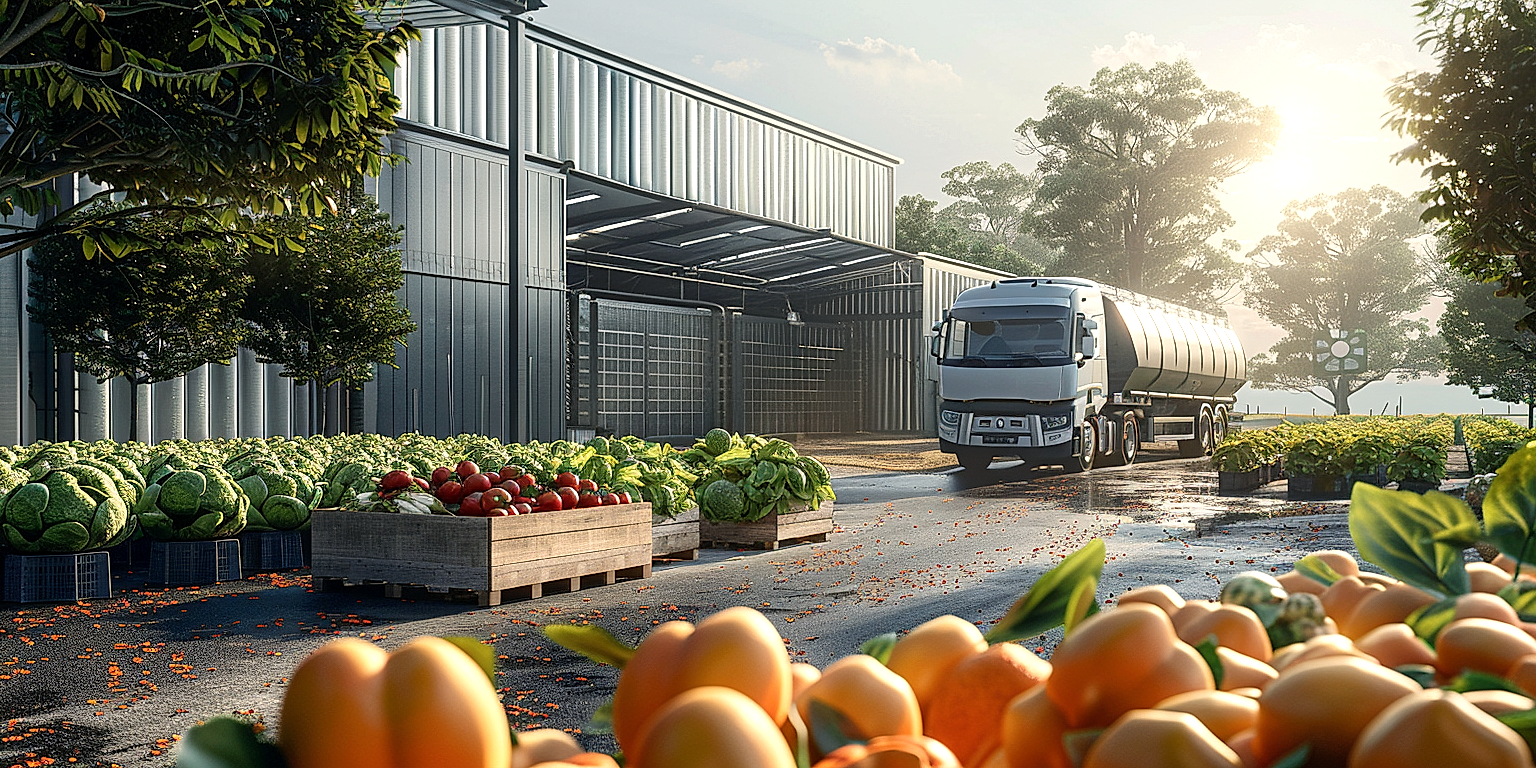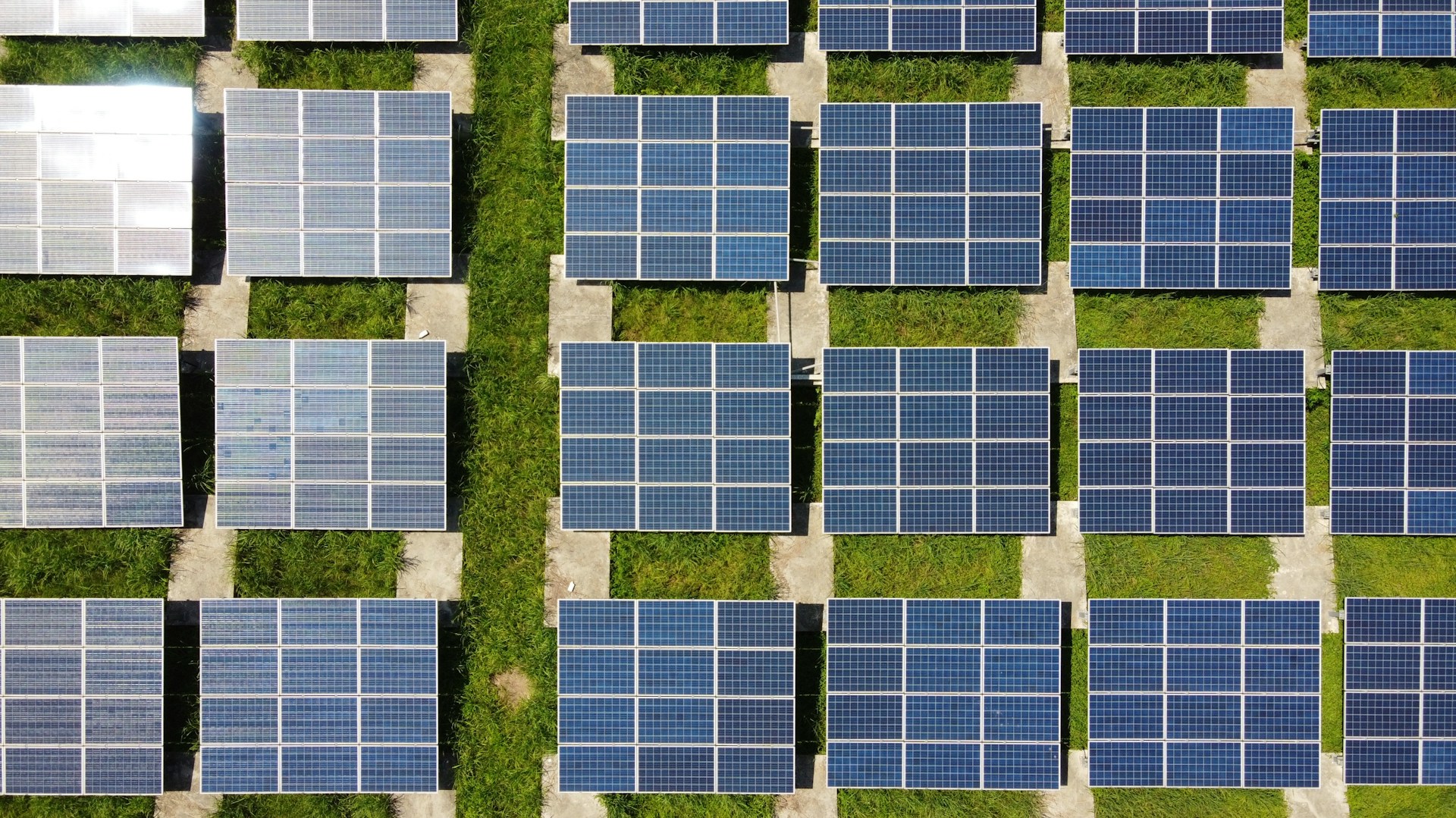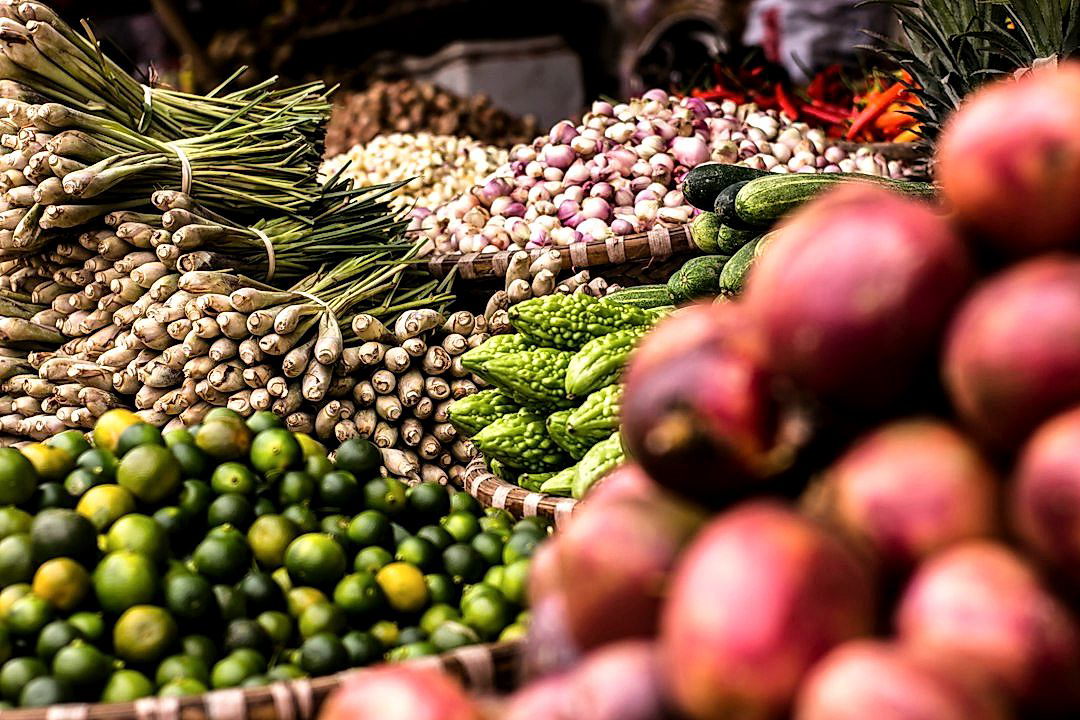In today’s world, the importance of sustainable strategies has skyrocketed in all industries.
The produce shipping sector is no exception.
Understanding the environmental impact of traditional shipping methods has led to an increasing need to change and adapt.
It’s no longer enough to simply provide a service – we must also consider the bigger picture and our role in it.
The impact on our planet has become a critical consideration in all business decisions.
This requires a shift in perspective and, more pertinently, an adaptation in the way we conduct our operations, particularly in the delivery of fresh produce.
Sustainable Practices For Eco-friendly Produce Shipping
1. Use biodegradable, recyclable packaging materials.
In the realm of eco-friendly produce shipping, one of the most significant considerations lies in the choice of packaging materials.
The use of biodegradable, recyclable materials can greatly lower the environmental impact of the shipping process.
This is because these materials, compared to plastic and other non-biodegradable alternatives, will decompose naturally over time without leaving any harmful residues.Notably, switching to these types of materials is a sustainable practice that can reduce waste and pollution generated by the shipping and handling of produce.
It’s important to point out that for packaging materials to be eco-friendly, they must not only be biodegradable or recyclable but also sourced sustainably.
This means that they should come from sources that are managed responsibly, ensuring that the harvesting or extraction of these materials doesn’t deplete resources or lead to environmental degradation.
Finding suppliers who can provide sustainable packaging materials may require time and effort, but the benefits to the environment make it a worthwhile investment.
Moreover, adopting biodegradable, recyclable packaging materials can offer benefits beyond environmental ones.
For instance, it can contribute to a company’s corporate social responsibility initiatives, potentially improving public relations and customer perception.
It’s also possible that by using such materials, operations may align more closely with environmental regulations, mitigating the risk of fines and other penalties.
Moreover, shifting towards recyclable and biodegradable packaging can potentially reduce disposal costs.
This is because many cities and countries are implementing policies that make it more expensive to dispose of non-recyclable waste, making biodegradable, recyclable materials the more cost-effective option in the long run.
At the end of the day, making the switch to biodegradable, recyclable packaging materials requires a holistic consideration of different aspects, including environmental impact, cost, regulations, and public signaling.
However, this sustainable practice is becoming increasingly critical in the industry as consumers, regulators, and businesses alike shift their focus towards eco-friendliness in all their activities, including the shipping and handling of produce.
Therefore, companies in this sector should strive to adopt this practice, both as a means of contributing to environmental conservation and as a strategy for achieving sustainability in their operations.
2. Optimize route for fuel-efficient delivery.
One significant step towards eco-friendly produce shipping involves optimizing delivery routes for fuel efficiency.
This means meticulously planning out delivery routes to minimize distances, and consequently, the amount of fuel consumed during transportation.
Prioritizing this approach not only significantly reduces the company’s carbon footprint but also results in cost savings, creating a mutual benefit for both the environment and the business.
Optimizing routes for fuel-efficient delivery can lead to significant reductions in carbon emissions while also providing financial advantages for the business.
Optimization can be achieved through advanced technologies and software that are specifically designed to calculate the most efficient routes.
Such technologies consider multiple factors such as distance, traffic congestion, and payload capacity to determine the best routes.
By integrating such advancements, companies can keep their fleet running smoothly and save valuable time while lowering their environmental impact.
It’s critical to note that route optimization also involves avoiding routes that may be shorter but requires more fuel due to uphill driving or poor road conditions.
Maintaining a keen eye on such considerations constitutes an essential part of creating fuel-efficient delivery systems.
Reducing the number of left turns can also influence fuel efficiency.
In many cases, making a left turn involves waiting for traffic to clear, which causes idling, recognized as one of the significant contributors to wasted fuel and unnecessary emissions.
Training for drivers also plays a crucial role in fuel-efficient delivery.
Beyond just knowing the routes, drivers should be educated about eco-driving techniques like avoiding quick starts and stops, maintaining a steady speed, and not idling unnecessarily.
These practices not only save fuel but also extend the life of vehicles, reducing the ecological impact of vehicle manufacturing and disposal.
In essence, optimizing routes for fuel-efficient delivery should be a critical element in any strategy aiming for sustainable, eco-friendly produce shipping.
3. Prioritize Local Sourcing to Reduce Transport Emissions
In the context of sustainable practices for eco-friendly produce shipping, prioritizing local sourcing can significantly reduce transport emissions.
Local sourcing, also known as local procurement, involves getting goods or services from local suppliers rather than from companies located farther away.
This practice aids in the reduction of transportation emissions, as the goods don’t have to travel a long distance before they reach the end consumers.
Consequently, incorporating local sourcing into the operations of food businesses and retailers can be a major step towards achieving sustainability and reducing environmental footprints.
The transportation sector significantly contributes to worldwide greenhouse gas emissions, and the long-distance transportation of goods is a key factor.
In many countries, this sector’s emissions have been growing faster than those from other sectors, emphasizing the need to make changes in how businesses source their products.
Local sourcing can support this change, by minimizing the distance over which goods are transported, and hence reducing the associated emissions.
Not only does this represent a positive environmental impact, but it can also provide economic benefits by supporting local economies and encouraging sustainable farming practices.
Local sourcing also aids in building a more resilient and diversified food system by supporting smaller and midsize farmers who tend to diversify their crops or livestock rather than specializing in one product.
Moreover, sourcing locally grown crops can also have benefits for consumers, as fresh produce tends to be more nutritious and often tastes better since it doesn’t have to be ‘designed’ to withstand being shipped long distances.
Despite these potential advantages, companies often face challenges in sourcing locally, ranging from matching supply and demand to ensuring consistent quality and dealing with higher costs.
To overcome these challenges, businesses can consider various strategies, such as developing close relationships with local farmers, implementing advanced planning and forecasting models, and drawing on technologies to enhance traceability and quality assurance.
Additionally, some companies may choose to join or form cooperatives, streamlining the entire process from cultivation to distribution and leveraging shared resources to minimize costs and inefficiencies.
Overall, while local sourcing presents some challenges, the multitude of environmental, financial and societal benefits make it an increasingly attractive option for businesses striving to improve their sustainability.
To move towards more sustainable business models and contribute to the fight against climate change, prioritizing local sourcing and reducing transport emissions should be an essential consideration for all involved in food production, distribution, and retail.
4. Perform Regular Vehicle Maintenance for Efficiency
Maintaining vehicles used in transportation regularly is a critical practice for achieving sustainability in produce shipping.
It might seem like a simple task, but in reality, it requires a thorough and systematic approach.
Regular vehicle maintenance does not only entail fixing obvious issues such as broken headlights or worn tires but also includes the optimization of key components that directly affect fuel efficiency and emissions.
For instance, ensuring the engine is running smoothly can make a significant difference.
An inefficient engine can lead to increased fuel consumption and harmful emissions, contributing to environmental pollution.
Similarly, maintaining the proper tyre inflation is also of utmost importance.
Research has shown that under-inflated tires can result in an increase in fuel consumption by up to 3%.
This not only translates to higher operating costs but also increases the carbon footprint of the company.
Hence, incorporating a comprehensive routine vehicle check-up in your business operations can go a long way in sustainable and eco-friendly produce shipping.
The scope of these check-ups should cover all areas that have a potential impact on vehicle efficiency and, consequently, the environment.
These areas include the brake system, exhaust system, and other parts that have a direct relationship with the vehicle’s fuel efficiency.
Catching and addressing potential issues early on can prevent them from growing into significant problems that can cost a lot more money and resources in the long run.
Furthermore, investing in more advanced and eco-friendlier technologies, like hybrid or electric vehicles, should also be considered because, in the long run, they afford significant savings in fuel costs and emission reductions.
However, should this not be possible due to financial constraints, even the most advanced vehicle will not run efficiently if it is not maintained properly, so regular maintenance can never be overlooked.
Maintaining vehicles consistently and adequately is the first step towards a more efficient and sustainable produce shipping operation.
It shows that you’re not only considering your company’s immediate costs but also the long-term impact on the environment.
Indeed, actions as simple as regular vehicle maintenance for efficiency can make a significant difference in the pursuit of more sustainable practices in produce shipping.
5. Use Renewable Energy Sources for Warehouses
As we pursue the goal of sustainable practices for eco-friendly produce shipping, it is crucial to consider the energy sources that power our warehouses.
Renewable energy presents a viable and environmentally-friendly alternative to traditional forms of energy.
It does not just avail unlimited power; it does so without contributing to harmful emissions.
The use of renewable energy dovetails perfectly with our goal of reducing our environmental footprint.
Ranging from solar to wind to geothermal energy, there are myriad renewable energy options available today.
Solar energy, arguably the most common form of renewable energy, can conveniently be harnessed through the installation of solar panels on warehouse roofs.
Using these roofs which often have ample space, warehouses can generate their own energy, thereby decreasing reliance on the grid and reducing energy costs.
Furthermore, with the continued advances in solar technology, the efficiency and power output of solar panels continue to increase, bolstering their feasibility for high-energy facilities like warehouses.
Besides, the modularity of solar panels allows for easy expansion, should the energy needs of the warehouse increase in the future.
Another renewable source to consider is wind power, particularly for warehouses located in areas with consistent and strong winds.
Installation of wind turbines can convert this wind into energy, providing another eco-friendly option for powering warehouses.
Geothermal energy, though less common, also offers a viable solution especially for warehouses situated in areas with high geothermal activity.
These are just examples; the choice of renewable energy source ultimately depends on the location and specific requirements of the warehouse.
While these options may require a significant initial investment, they promise long-term savings and undeniable environmental benefits.
In turn, this approach evidences a company’s commitment not just to sustainability, but to a future that safeguards our planet.
The switch to renewable energy sources for warehouses is thus a critical aspect of achieving sustainable practices for eco-friendly produce shipping.
The Bottom Line
Businesses can greatly contribute to the protection of our environment by implementing eco-friendly practices in their operations and supply chains.
By favoring biodegradable and recyclable packaging materials, they directly contribute to reducing plastic pollution.
Moreover, optimizing delivery routes and maintaining vehicles regularly enhance fuel efficiency, thus reducing the level of harmful emissions.
Sourcing locally not only supports the local economy but also mitigates transport-related emissions.
Furthermore, harnessing renewable energy sources for warehouses underpins a sustainable operation mode by reducing reliance on fossil fuels.
All these actions build towards a more sustainable business model that benefits not just the company but the entire planet.




